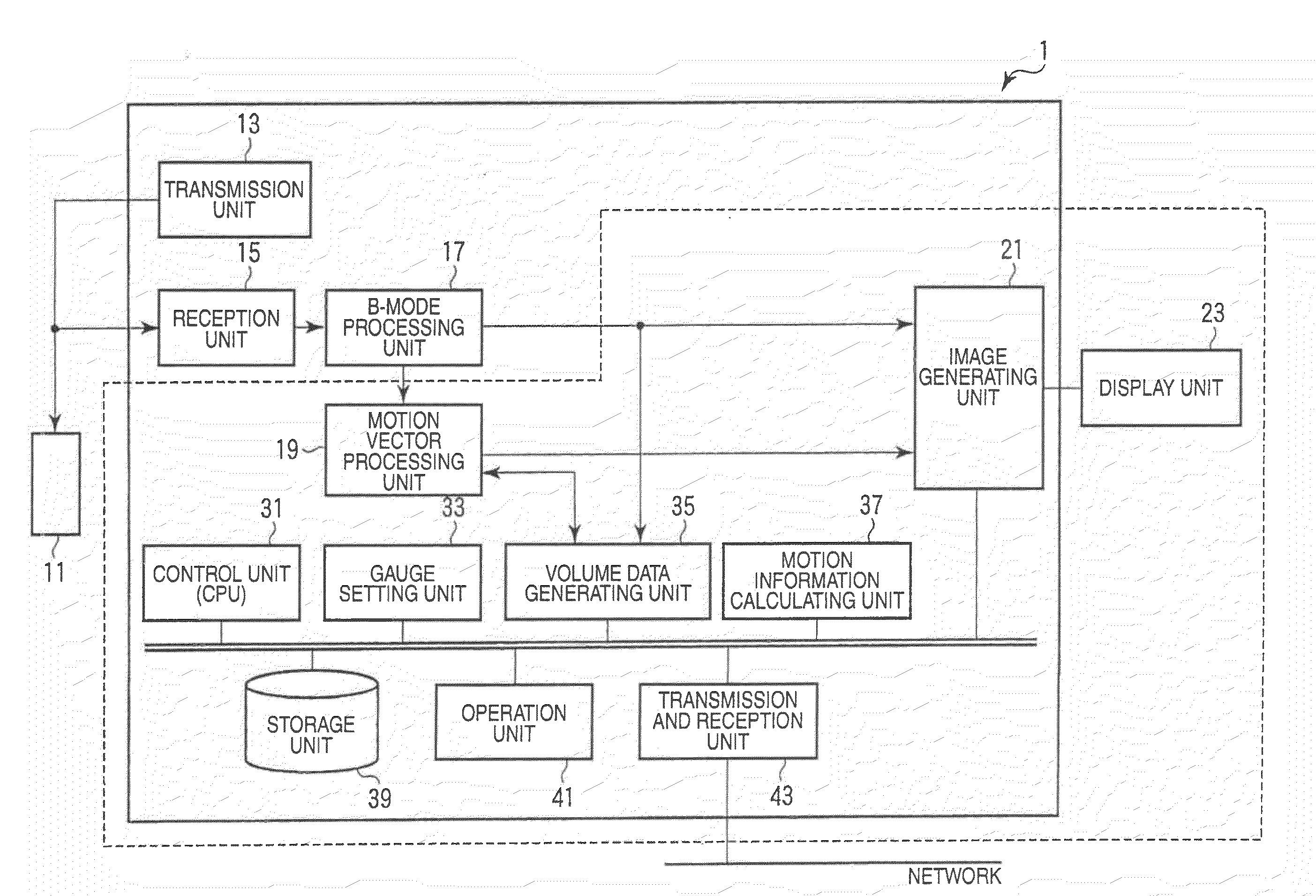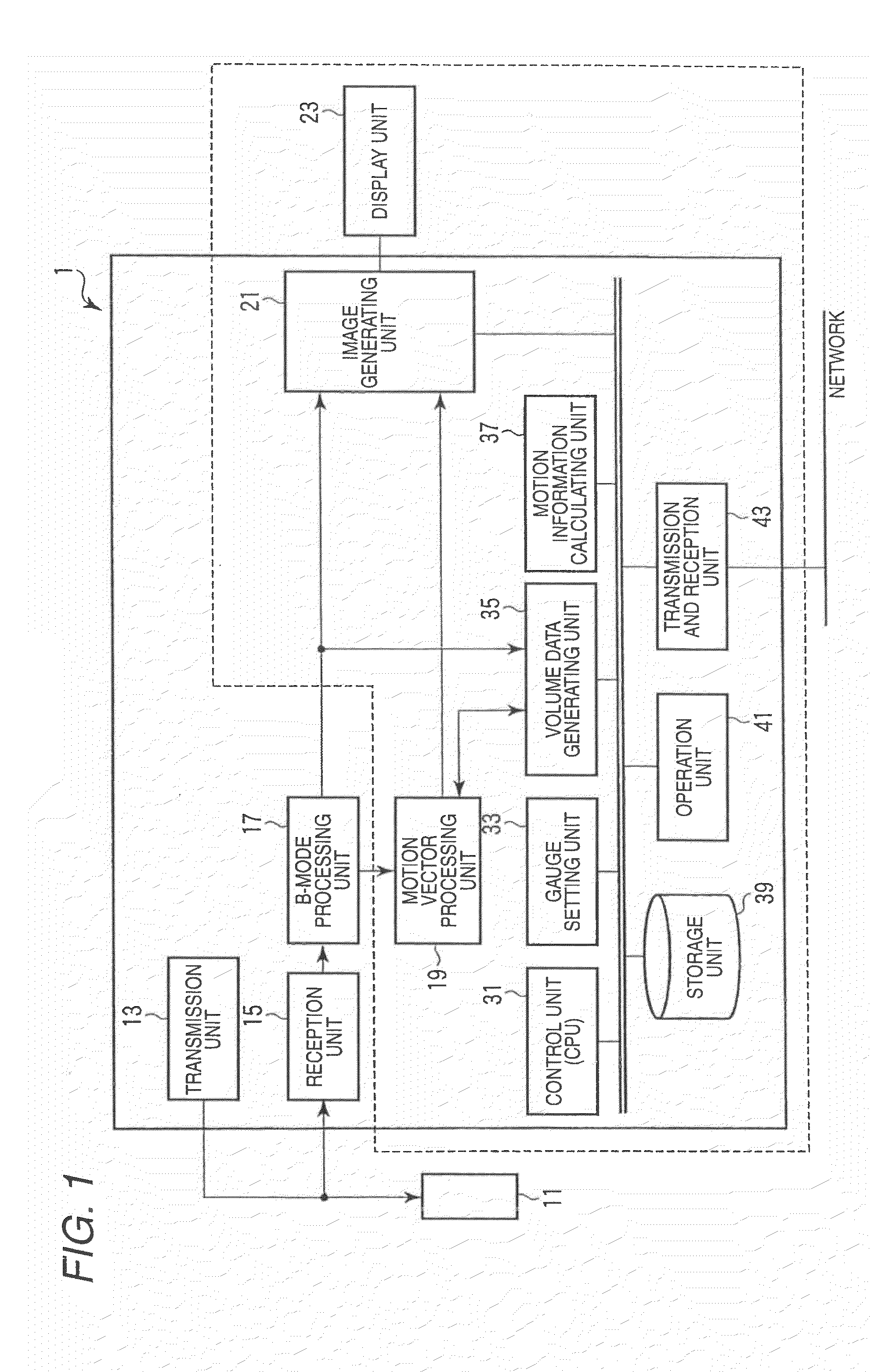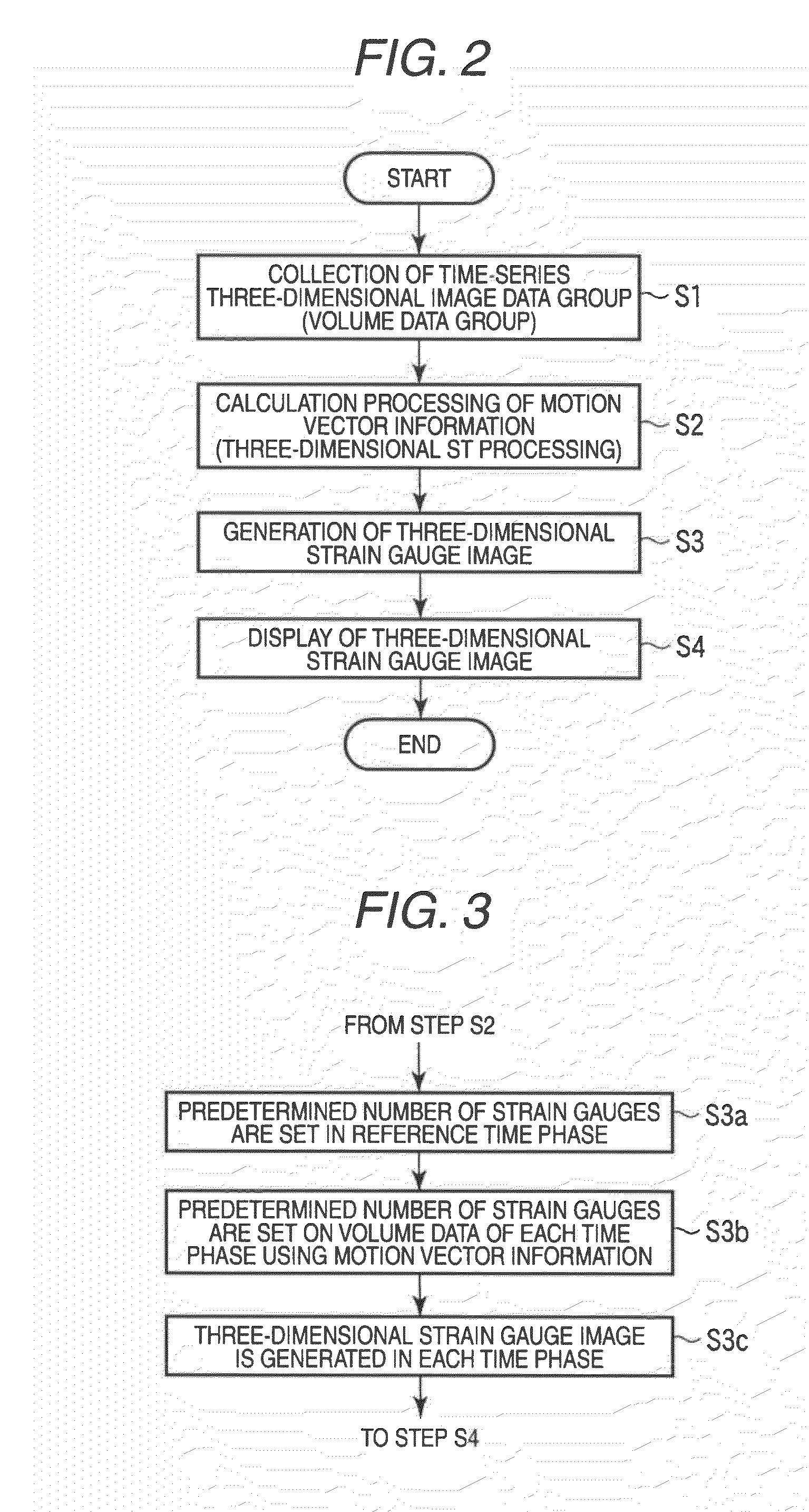Ultrasonic diagnostic apparatus, ultrasonic image processing apparatus, and medical image processing apparatus
- Summary
- Abstract
- Description
- Claims
- Application Information
AI Technical Summary
Benefits of technology
Problems solved by technology
Method used
Image
Examples
first embodiment
[0050]FIG. 1 is a block diagram illustrating an ultrasonic diagnostic apparatus 1 according to a first embodiment. The ultrasonic diagnostic apparatus 1 includes an ultrasonic probe 11, a transmission unit 13, a reception unit 15, a B-mode processing unit 17, the motion vector processing unit 19, the image generating unit 21, a display unit 23, a control unit (CPU) 31, a volume data generating unit 35, the motion information generating unit 37, the gauge setting unit 38, a storage unit 39, an operation unit 41, and a network transmission and reception unit 43. In addition, in the case of applying the technical idea of the invention to an ultrasonic image processing apparatus, the inside components of a dotted line of FIG. 1 are constituent components of the ultrasonic image processing apparatus, for example.
[0051]The ultrasonic probe 11 generates an ultrasonic wave on the basis of a driving signal from the transmission unit 12 and has a plurality of piezoelectric vibrators that conv...
second embodiment
[0087]Next, a second embodiment of the invention will be described. An ultrasonic diagnostic apparatus according to the present embodiment serves to generate and display a three-dimensional strain gauge image with an object to be subjected to speckle tracking processing as a strain gauge between endomyocardial and epimyocardial layers of the heart.
[0088]FIG. 12 is a flow chart illustrating the flow of processing for generating and displaying a three-dimensional strain gauge image in the second embodiment. Hereinafter, details of the processing in each step will be described.
[0089][Step S11: Data Collection]
[0090]First, similar to step S1, a time-series volume data group is collected (step S11).
[0091][Step S12: Setting of Arbitrary Section and Strain Gauge]
[0092]Then, a plurality of arbitrary sections are set for volume data in a reference time phase, and a strain gauge is set between endomyocardial and epimyocardial layers of the heart on each section (step S12). That is, in referen...
first example
[0097]In a tracking method of this example, a motion component V is calculated by projecting a motion vector at each position of the tissue, which exists on each section, in the normal direction and averaging them and arbitrary sections and strain gauges in each time phase are tracked using the motion component V.
[0098]FIG. 13 is a flow chart illustrating the flow of calculation processing of motion vector information in step S13. As shown in FIG. 13, first, a motion component V=Vz, meant(to) in the reference time phase t0 is calculated by averaging only a normal direction component Vz (projected component in the normal direction) of the motion vector of each myocardium (that is, each position of the tissue included in each plane) on each of the B, M, and A planes set for volume data in the reference time phase (step S13a).
[0099]Then, each of the B, M, and A planes set in the reference time phase is moved in parallel by the motion component V=Vz, meant(t0) along the normal direction...
PUM
 Login to View More
Login to View More Abstract
Description
Claims
Application Information
 Login to View More
Login to View More - R&D
- Intellectual Property
- Life Sciences
- Materials
- Tech Scout
- Unparalleled Data Quality
- Higher Quality Content
- 60% Fewer Hallucinations
Browse by: Latest US Patents, China's latest patents, Technical Efficacy Thesaurus, Application Domain, Technology Topic, Popular Technical Reports.
© 2025 PatSnap. All rights reserved.Legal|Privacy policy|Modern Slavery Act Transparency Statement|Sitemap|About US| Contact US: help@patsnap.com



